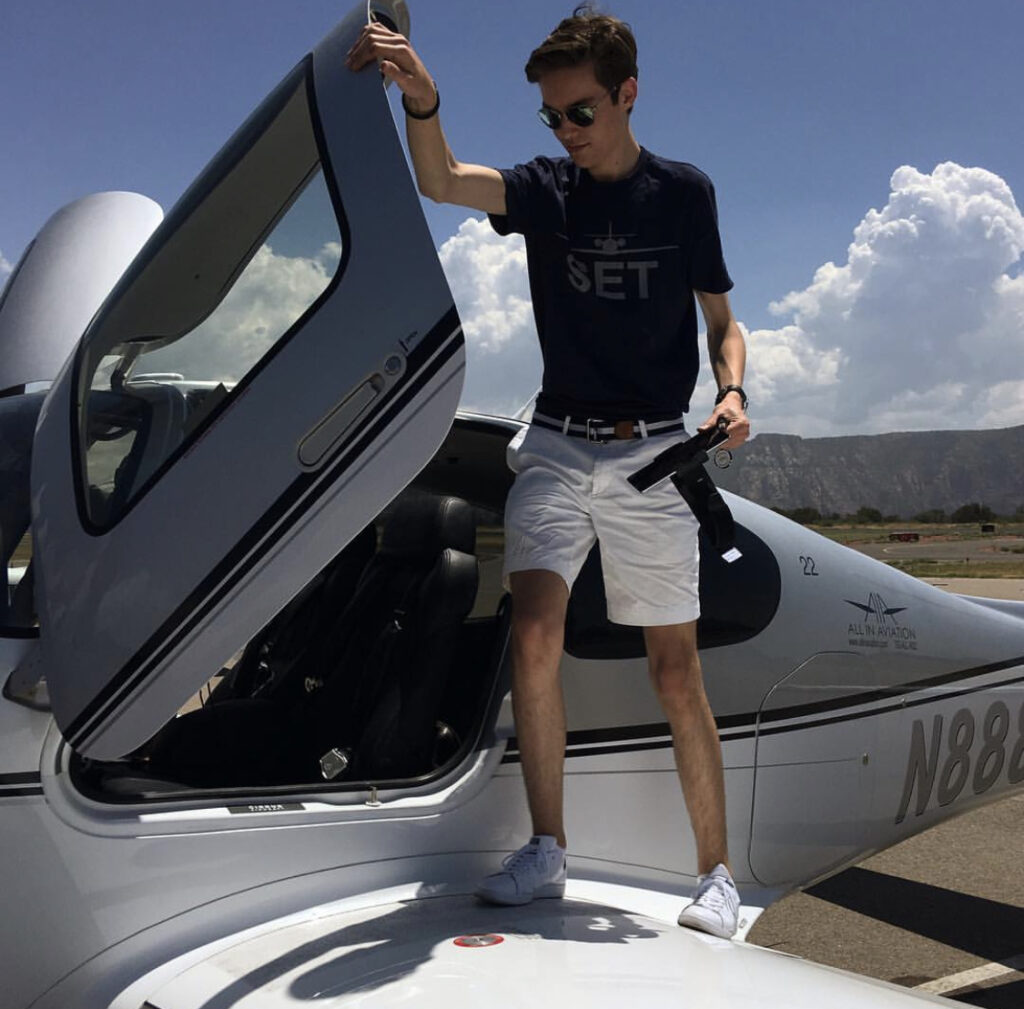Now more than ever, aviation needs a training approach that is efficient and safe. Together with some big names in the aviation world, Sebastiaan Esselens (master’s student Business Engineering: Management Information Systems), created a model to make pilot training more varied and personalized.
New modular approach to Scenario-Based Training
Today, aircraft are one of the safest means of transportation. Pilots still bear a great responsibility., even though many operations within the cockpit are automated. An excellent, up-to-date flight training is therefore of the utmost importance. However, this sort of training costs a lot of money, both for the student pilots and for the airlines.
“In secondary school I started training as a private pilot, together with my father,” says Sebastiaan Esselens. “In my first bachelor year I obtained my license. During my training, however, I noticed that flight schools could make more use of innovative technologies to make the training more efficient and cost-friendly.”
“So many boys and girls dream of becoming a pilot, but many are held back by the cost of the training”.
Boeing 737 MAX
When building new aircraft, manufacturers often choose to update old designs instead of designing new ones that are safer, more sustainable, more innovative, etc. This is mostly due to financial reasons and due to the fact that all existing pilots would have to follow a mandatory retraining.
“Just take the Boeing 737 MAX for example. This aircraft is basically an update of the Boeing 737 that was designed in the 1960s. The first investigation reports of the two tragic accidents that took place with the 737 MAX now show that the pilots received insufficient training and were insufficiently aware of changes to the aircraft.”
Esselens: “Aviation today is at a critical point. We must avoid a deterioration in safety levels as a result of saving costs. In order to limit the cost of training without compromising safety, pilot training must become more personalized and more adaptable to changes, both in aircraft design and in procedures and regulations. This balance between a societal need for safer aviation and an economic demand for more efficient pilot training inspired my research”.

Submitted to Cessna
For his thesis, Sebastiaan developed a new modular approach to Scenario-Based Training. This makes it possible to create evolving training scenarios and curricula. In this type of training, several scenarios are presented to the student which, unlike classical Scenario-Based Training, are personalized based on the individual training history of the student-pilot. In addition, these scenarios can easily be adapted to procedural changes or changes to the aircraft type.
Sebastiaan: “I presented this idea to various stakeholders in the aviation industry: flight schools, aircraft manufacturers such as Cessna and Cirrus and even to John and Martha King, the legendary American flight instructors who educated about half of American pilots with their instructional videos.
“They were all very enthusiastic. For them, this was the next big thing.”
Fewer accidents
Moreover, Sebastian’s research can also be a starting point for a new cockpit safety system. Using an augmented reality application that has data about the training history of the pilot, the aircraft could display the optimal decision to the pilot in critical situations. This way, procedural changes or changes in legislation are implemented within the cockpit much faster than before. If such a change is implemented today, it often takes months or years before pilots are aware of it. This creates dangerous situations at times. The system could therefore drastically reduce the implementation time and thus prevent fatal accidents.
Sebastiaan based his research on the Normalized Systems theory of professors Herwig Mannaert and Jan Verelst (UAntwerp). This design theory previously proved its success in the development of evolvable software, business processes and documents. To validate the research, Sebastiaan worked together with EuroPilot Center, an Antwerp flight school specialized in Scenario-Based Training.
Find out more about the Business Engineering: Management Information Systems programme.


